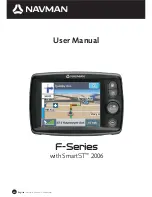
COMPANY CONFIDENTIAL: CalAmp reserves all rights to these documents and any information contained therein.
Page
Reproduction use or disclosure to third parties without express permission is strictly prohibited. ©2020 CalAmp
28
of
35
LMU-1300 Training Guide
Revision & Date
0.8–09/22/2020
Be sure to consider the design decisions described in the previous sections. When you are ready to begin
installing the LMU, follow these steps:
Place the LMU in the Vehicle
The LMU-1300 contains an internal battery, and thus should be oriented with the label facing upwards
towards the sky. LMUs with internal antennas should be placed directly under a thick panel to maximize
their performance and protect from external elements. A typical location includes under the dash close to
the front wind-shield.
Attach the LMU to the solid body of the vehicle, not to plastic panels. The LMU can be placed out of sight
by removing interior trim and molding to expose available space, then replacing the trim once the LMU is
in place.
Connect Power, Ignition, and Ground
The power input (red wire) must be connected to a constant (un-switched) +12 VDC or +24 VDC supply;
preferably, connected directly to the vehicle battery terminal or as close to it as possible. This connection
point should be fuse protected to not more than 5 Amps for 12VDC or 2.5 Amps for 24VDC.
The ignition input (white wire) must be connected to the vehicle ignition or another appropriate key
operated line, such as ACCESSORY, ensuring that power to the ignition wire is available only when the
vehicle ignition is on.
The ground line (black wire) must be connected to chassis ground.
Failure to connect these lines in the manner described may result in discharge of the vehicle battery.
For best results, it is strongly recommended that the LMU connection be on its own circuit. Connect the
power input directly to the vehicle battery if possible and protect the circuit with an inline fuse, as noted
above. If you must connect through the fuse box, use standard commercial wiring practices to create a
permanent installation rather than using press-in fuse clips or other temporary measures.
DO NOT connect the power cable to the LMU at this time.
Typical Connection Sequence
Connect any peripherals to the LMU
Plug in the power harness.
The physical installation of the LMU hardware is now complete.
8.
Installation Verification
In many cases it is desirable to verify that an installed LMU-1300™ is working properly. That is, installers
should verify that the GPS and communications functions of the LMU-1300™ are working properly before
departing the installation site. In more robust cases, some key configuration settings such as the Inbound
Address and URL should also be verified.







































